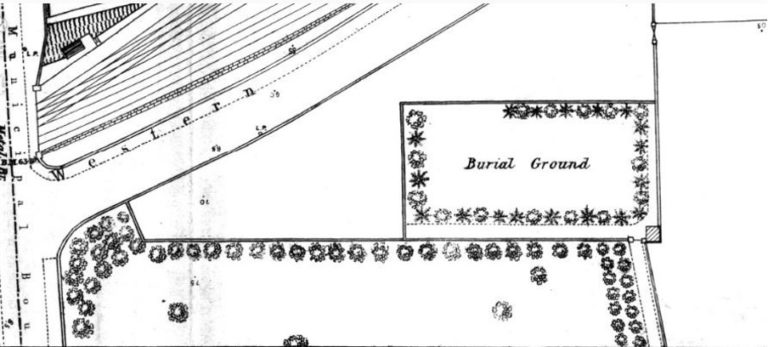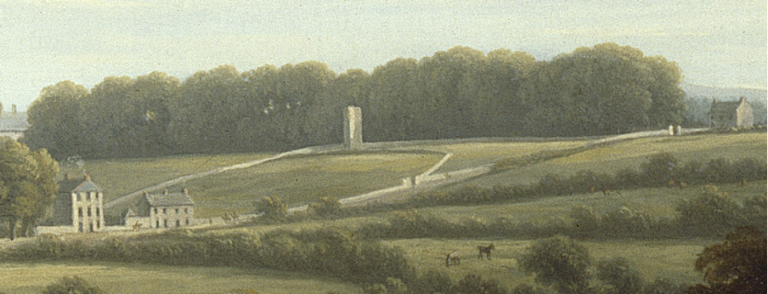Military Cemetary
The Military Cemetery exclusively used for pensioned Privates and Non-commissioned Officers was developed in 1880 in a field that had been contested ground in the 18th century.
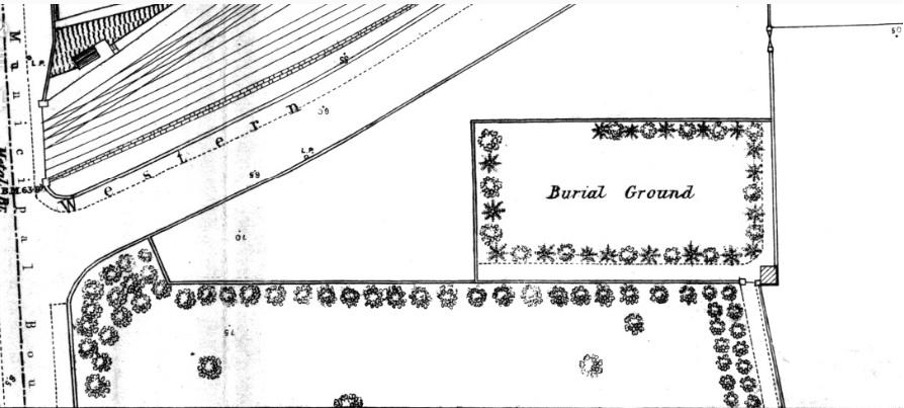
A local family called Flannagan set up a kiosk at the Holy well of St John, renting cups to those wishing to drink the holy water. The kiosk eventually grew into a public house when they added alcohol to the cups. The Flanagan’s had established grazing rights over the field and later took possession of the field attempting to sell in in the late 1700’s. In 1795 the Royal Hospital reclaimed ownership over the ground and Sir John Trail the Surveyor General responsible for building Kilmainham Gaol enclosed the field with a stone wall.
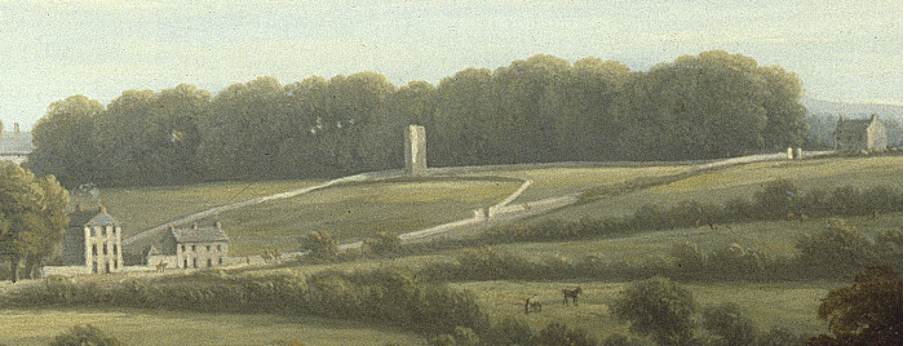
In William Ashford’s painting of Dublin as seen from the phoenix park, he includes a detail of the large water tower that stood in Bully’s Acre and the field can be seen intact before the railway culvert was excavated in 1844. Also at the western side of the field the location of the holy well of St John is indicated.
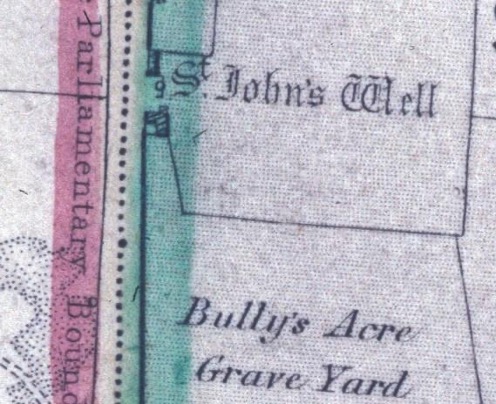
Sir John Trail also built a surround and cistern for St John’s Well, a holy well that dates back before the Knights Hospitaller Priory was established in 1174. The holy well was situated at the west side of the field and was destroyed when the railway culvert was excavated. Cutting off the aquifer that fed the holy well. This well was a focal point for catholic worship during the penal laws that banned catholic gatherings for worship. In the 18th Century these gatherings developed into debauched gatherings and Patterns around the site of the well on both St John’s Eve, 23rd of June and St Maighneann’s eve, 17th of December. These alcohol fuelled ed gatherings became a concern for keeping public order and resulted in several attempts by the Royal Hospital Governors and Masters to enclose the cemeteries and stop all gatherings on the Hospital lands. Despite the efforts of the Royal Hospital the gatherings persisted until the well was destroyed by the excavation of the Railway culvert.
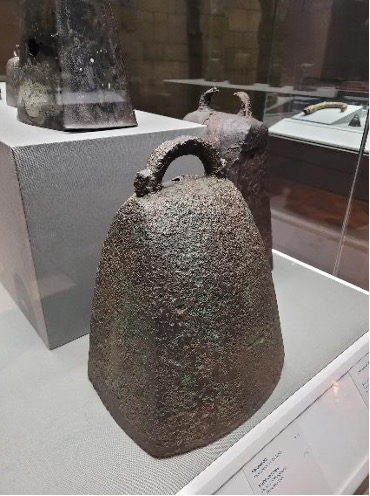
During the railway excavations an ecclesiastic handbell was recovered and is now in the national Museum collection. Perceval Wright in 1900 dated the bell to the 12th century or sometime later. It could possibly have been a relic of the Knights Hospitaller Priory. In 1965, during road widening, a medieval mill wheel and a medieval hearth surrounded by spall stones were uncovered when reinterring the remains of disturbed military pensioners. These are believed to be some of the archaeological remnants of the Knights Hospitaller Priory castle that occupied the site from 1174-1612.
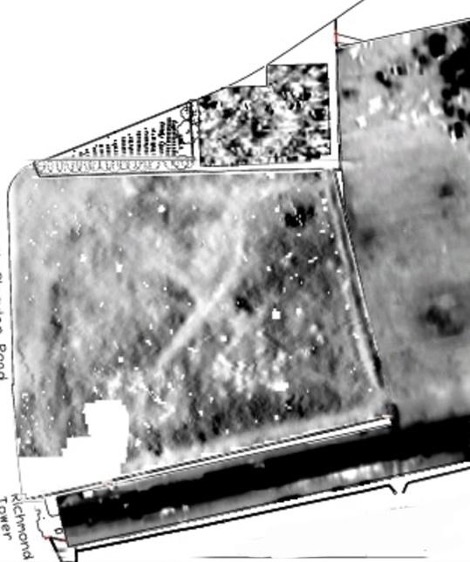
Evidence for this being location of the inner castle of the Hospitaller Priory is also supported by the combined Geophysics reports of 2012 and 2022 that show a large rectangular anomaly of 160 x 90 meters running from Bully’s Acre, into the Military Cemetery and out under the road toward the Railway culvert.
SUPPORTED BY
The IMMA Heritage Trail is kindly supported by An Chomhairle Oidhreachta / The Heritage Council and the Office of Public Works. OSI Historic map details are provided courtesy of Tailte Éireann.



